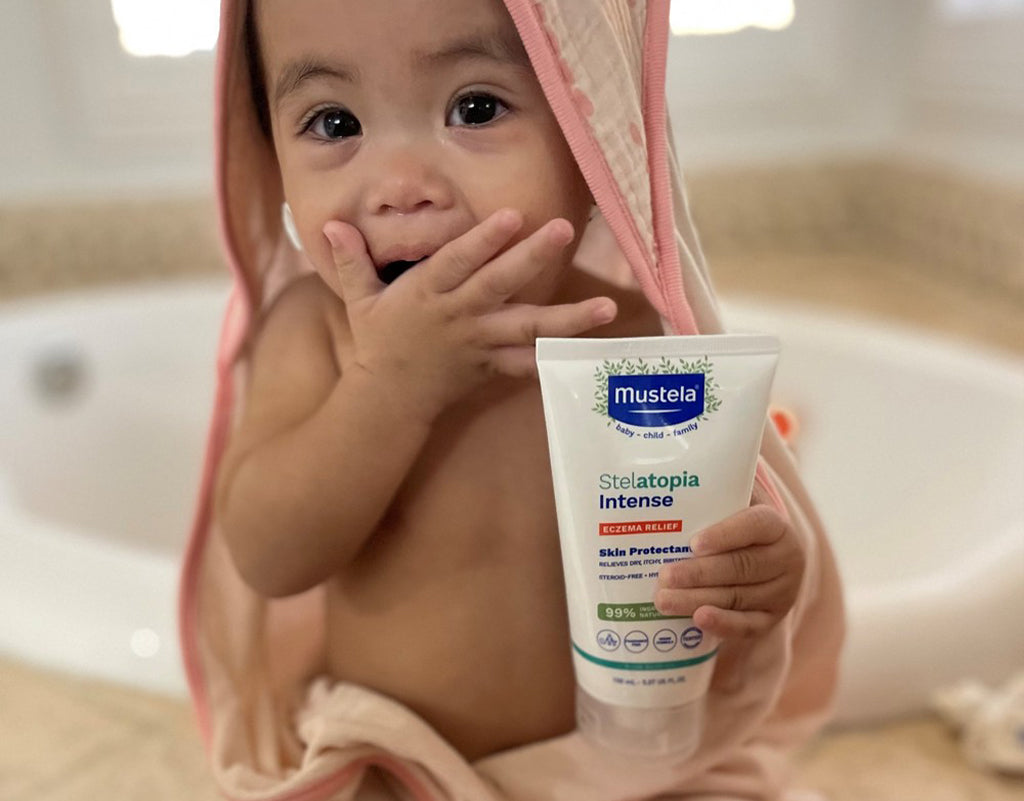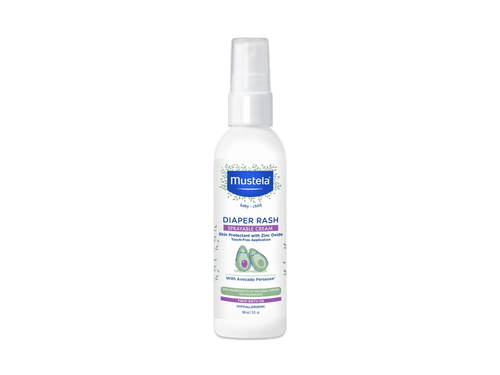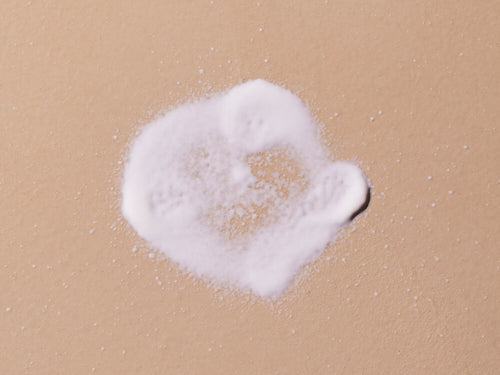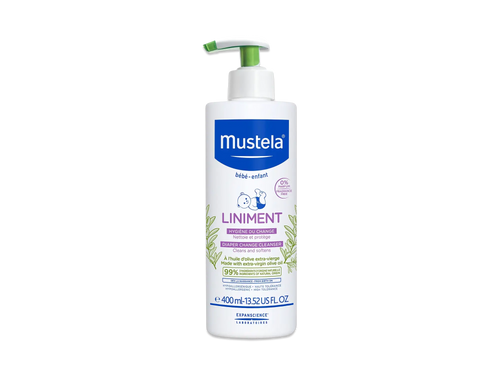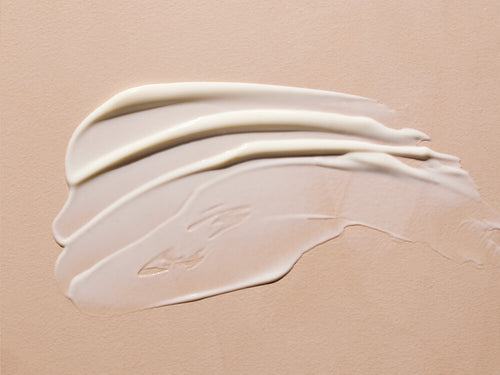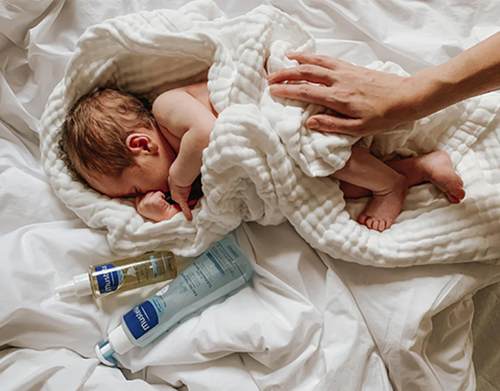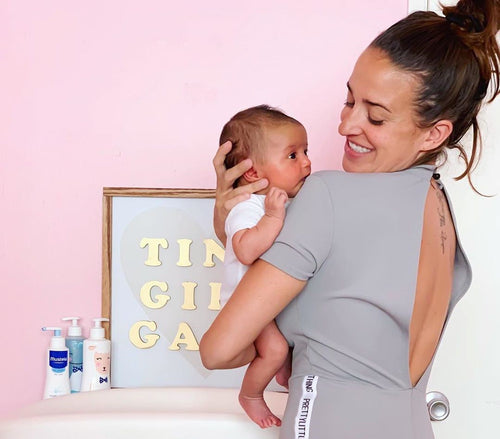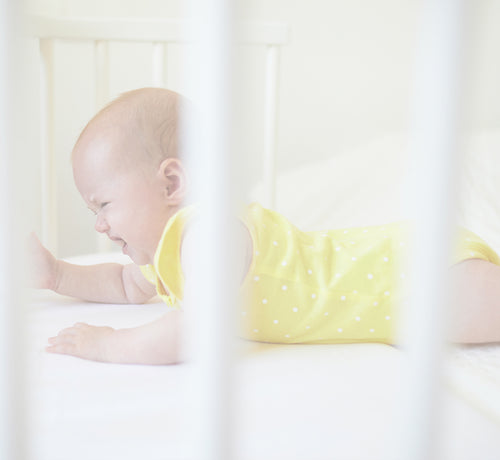Even with the most attentive cleansing and changing, it’s bound to happen: the dreaded diaper rash. Unfortunately, this isn’t a one-size-fits-all condition. In fact, there are six different types of diaper rash and several other conditions that might look like it.
In this article, we’ll discuss the six different types of diaper rash so you can figure out what’s causing your baby’s discomfort. We’ll also cover the best treatments to soothe your little one’s ever-so-delicate skin. Bottoms up!
What Is Diaper Rash?
Diaper rash is a general term for red and tender skin in the diaper area. Diaper rash is most common under the age of one year. It’s estimated that about 50% of babies suffer from diaper rash at one time or another.
Although, normally, diaper rash is more uncomfortable than dangerous, if accompanied by a fever or other symptoms, it could indicate a more serious condition. If that’s the case, take a trip to your doctor’s office as soon as you can.
Diaper Rash Symptoms
In addition to red and tender skin, here are a few additional symptoms to watch for:
- Fussiness during diaper changes
- Raised, scaly patches of skin in the diaper area
- Skin that feels warm to the touch
- The diaper area looks slightly puffy or swollen
Diaper Rash Risk Factors
While all babies are at risk for diaper rash, your little one is more likely to develop this type of diaper rash if they:
- Are teething (they’re swallowing extra saliva, which then passes through their digestive system and can cause a rash)
- Have diarrhea
- Are between diaper sizes and consistently wearing one that’s too big or too small
- Are taking antibiotics
- Have very sensitive skin
- Are breastfeeding and you are taking antibiotics
7 Different Types Of Diaper Rash
Now that you know what diaper rash is, let’s look at the six different types as well as their causes and treatment options.
Irritant Dermatitis
This type of diaper rash is just what its name suggests. Something is irritating your poor baby’s skin, making it red and sore. The most common of the different types of diaper rash, it’s easy to address, which is good news for babies and parents.
Causes
Although many things can irritate a baby's delicate skin, the most common culprit is an overly wet or soiled diaper. If the diaper is full for too long, moisture will be trapped, irritating the skin.
This type of diaper rash can also be caused by the diaper chafing your little one’s skin or a too-tight fit.
Treatment
To treat this type of diaper rash, you want to focus on keeping your baby's skin as clean and dry as possible. After a diaper change, the American Academy of Dermatologists suggests letting your little one spend some time in their birthday suit.
As for the diaper’s fit, well, muffin tops are a no-no. Make sure their belly isn’t spilling out over the top. As much as you want everything to stay inside, you don’t want the diaper too tight. Read our guide on how to properly fit babies for their diapers.
Other tips:
- Check and change the diaper at 2- to 3-hour intervals.
- Use gentle diaper wipes, like our Cleansing Wipes made with soothing avocado.
- Slather on a thick protective layer of diaper cream with Zinc Oxide, like our ever-popular Diaper Rash Cream 123 (don’t skimp on the cream. Put it on like you’re frosting a cake.)
Allergic Contact Dermatitis

This is another easy one: Instead of merely an irritant, this type of diaper rash is caused by an allergic reaction making your baby’s skin itchy, red, and even scaly.
Causes
Check the changing table. Anything that comes into contact with your baby’s diaper area could be at fault. Diapers, wipes, and creams are often to blame, especially if they contain dyes, fragrances, or preservatives.
Some food allergies or intolerances can also present with a diaper rash. If you’ve recently introduced a new food, it’s worth investigating.
Here are a few foods that can cause a rash in the diaper area:
- Berries
- Tomatoes or food that contains tomatoes, like ketchup or spaghetti sauce
- Oranges, lemons, and other citrus fruits
- Pineapple
- Milk proteins
A doctor or allergist can perform tests to determine if your baby is allergic to any of these or anything else.
Treatment
This probably goes without saying, but stop using whatever is irritating your baby’s skin, and don’t feed them any food they’re allergic to. Keep in mind that it may be a few weeks until the area is totally clear.
If you suspect the diaper, change the diaper brand. You might also consider Mustela's Home Compostable Fragrance-Free Wipes. A topical barrier rash cream or a no-touch diaper cream, like our Diaper Rash Sprayable Cream, may also go a long way toward relief.
Candida Diaper Rash
Candida diaper rash (yeast diaper rash) is quite common and causes red and purple sores, bumps, or cracked dry skin in the diaper area. It can also cause swelling and pus-filled lesions that look like small pimples.
Candida is a yeast (fungus) that grows well in moist places — we’re looking at you, diaper!
Causes
This type of diaper rash is caused by an infection from yeast overgrowth. Is your baby or a breastfeeding parent taking antibiotics? Antibiotics can throw off the balance of good bacteria in your baby’s body, making it easier for yeast to grow.
Candida diaper rash can also be caused by thrush. Thrush is a different type of yeast infection that affects the mouth. As what goes in must come out, the yeast can migrate to the diaper region, causing this additional discomfort.
Treatment
Because yeast is a fungus, your baby will need an antifungal cream to treat the rash. You can purchase an over-the-counter cream, but if the area doesn’t clear up or if your baby is also running a fever, talk to their doctor about other treatment options.
If your baby is old enough, ask their doctor about giving them probiotics, such as yogurt. This can help keep their gut bacteria balanced and reduce the risk of yeast overgrowth.
Acidic Diaper Rash
If your little one’s stool is too acidic, it can cause an inflamed, red ring around the bottom. Occasionally, you may see a similar ring around their mouth.
Causes
The acid in your baby’s poop causes this type of diaper rash. Certain foods are known to increase the acidity. They include:
- Tomatoes
- Citrus fruits
- Strawberries
- Pineapple
- Some cheeses, such as cottage cheese, cheddar, and feta
- Spicy foods, such as curries, salsa, and chili
Treatment
If you know what type of food caused the rash, limit or eliminate it from your baby’s diet for a while to prevent a recurrence.
To treat acid diaper rash, be sure to change poopy diapers as soon as possible. The longer the stools are in contact with your baby’s skin, the worse their rash will become. After each poopy diaper, wash your little one’s bottom with No Rinse Cleansing Water to help remove the acid.
Then, dry the area well and apply a thick layer of Diaper Rash Cream 1 2 3 to create a barrier between your baby’s skin and their stool.
Bacterial Dermatitis

This is one of the most serious of the different types of diaper rash. In some cases, a bacterial infection caused by bacteria such as Staphylococcus aureus is the root cause of a baby's diaper rash.
Staph diaper rash is pretty unpleasant-looking. It presents as pus-filled bumps that can rupture, leaving scaly-looking skin. Often with bacterial infections, there are other symptoms, like fever, bleeding, or lethargy.
Causes
This type of diaper rash is caused by staph bacteria, generally Staphylococcus aureus. The bacteria produce a toxin that reddens and damages skin.
Unfortunately, this bacteria is common, so it can be hard to pinpoint the exact cause. Your baby could have come into contact with it in a hospital or daycare setting, from unclean hands that have been near the diaper area, or from an infected family member or caregiver.
Treatment
Bacterial infections require a prompt doctor’s visit, as your baby will have to be put on a course of antibiotics such as amoxicillin or penicillin.
You’ll also want to keep the diaper area clean and dry. If you have a baby girl, remember to wipe from front to back to help prevent the bacteria from spreading.
Strep Diaper Rash
Of the different types of diaper rash, strep diaper rash is another one that can be serious. This time the bacteria Group A Streptococcus is to blame. The diaper rash presents as a perianal rash (a red ring around the bum hole) with itching, pain, and sometimes bleeding.
With any diaper rash caused by bacteria, other symptoms like fever, lethargy, or bleeding may be present.
Causes
As we mentioned, Group A Streptococcus bacteria are the culprits behind a strep diaper rash. They’re the same bacteria that cause strep throat. The bacteria can spread from your hands to your baby’s bottom during a diaper change.
Treatment
If you suspect a strep diaper rash, contact your pediatrician promptly. A rapid strep test can confirm the diagnosis. A doctor will prescribe antibiotics to fight the infection.
Give your baby the full course of treatment, even if their symptoms improve halfway through. Otherwise, the rash could come back with a vengeance and be even harder to treat the next time.
Also, since the strep bacteria can transfer from your hands to your baby’s diaper area, always wash your hands thoroughly before changing your baby’s diaper. And, of course, rewash them afterward to prevent transferring the bacteria to anyone.
Hand Foot And Mouth Disease
Although this is technically a disease, it can present with a diaper rash, so we included it so that you can be mindful when evaluating your baby. This contagious viral disease causes rashes in the mouth and throat, on the palms of the hands, and the soles of the feet.
Your child may also have a fever and flu-like symptoms. They may not want to eat or drink.
Causes
This virus can spread when good hand-washing procedures aren’t followed after a trip to the loo or after changing a diaper. It can also spread through sneezing, coughing, drooling, or even talking.
Hand, foot, and mouth disease spreads quickly — it’s very contagious. Your little one could be exposed by:
- Touching someone else who is infected
- Sharing cups or utensils
- Touching an area that’s been contaminated with infected droplets
The highest rates of hand, foot, and mouth disease are in the summer and fall. However, it’s possible to get it any time of the year.
Treatment
Unfortunately, there is no quick fix for this – it’s more about symptom management. Make sure your baby stays hydrated, and ask your doctor about pain relief, such as acetaminophen or ibuprofen.
You’ll also want to use diaper rash cream on their bottom to keep the skin in the area from becoming too irritated. While it won’t help the rash from hand, foot, and mouth disease, it’ll prevent them from developing a different type of diaper rash on top of it.
It’s important to contact your doctor promptly if your baby has a fever or is not eating or drinking.
Other Treatment Options
No matter what type of diaper rash your little one has, here are a few additional treatment options:
- Give them a short, cool oatmeal bath each day to keep their skin clean and provide relief.
- After each bath, use a moisturizing product like our Hydra Bebe Body Lotion or Liniment on their diaper area.
- Select alcohol-free baby wipes – you don’t want to irritate the area further.
- Pat the area dry with a soft towel or washcloth before putting on a fresh diaper (don’t rub!)
- Use water to wash their bum after each bowel movement (instead of wipes.)
You’ll also want to ensure that everyone who cares for your baby knows and follows the protocol. Explain to any caregivers that your little one has a rash and walk them through the steps they must take with each diaper change.
When you work as a team, you’ll beat the rash faster.
When To Contact A Doctor About Diaper Rash
Typically, your baby’s diaper rash is something you can treat at home. However, there are a few scenarios when you should contact their doctor.
If you notice any of the following, it’s worth getting them checked out:
- Prolonged rash: The rash should start improving within a couple of days of you starting treatment.
- Oozy sores: A diaper rash can sometimes cause blisters or pus-filled sores that bleed and ooze.
- Taking antibiotics: If your baby is taking antibiotics and develops a spotted rash in the diaper area, it could be a sign of an allergic reaction.
- Extreme pain: A diaper rash that leaves your baby in agony could be cellulitis or another bacterial infection.
- Fever: A fever plus a rash isn’t a good combination.
- Lethargy: If you have trouble waking your little one, or they seem extremely tired and floppy, take them to the doctor right away.
- Uncertain diagnosis: If you’re unsure what is causing your little one’s rash, a doctor can evaluate them and help you figure out what’s happening. They’ll also help you develop a plan of treatment.
And, remember, you know your baby best. If anything doesn’t seem right, even if it’s not on this list, go ahead and schedule an appointment. It’s better to be safe than sorry when dealing with your little one’s health.
Tips For Preventing Diaper Rash

Once your baby’s diaper rash clears up, you don’t want it to return. These prevention tips can help keep their skin looking healthy and smooth.
Change Diapers Frequently
The longer your baby sits in a dirty diaper, the more likely they will develop a rash. Change their diaper every two to three hours or immediately after they’ve had a bowel movement.
Air Out Your Baby’s Bottom
Whenever possible, give your baby some time without a diaper on. This allows for air circulation and keeps the area dry.
However, some parents are hesitant to leave the diaper off. There is always a risk that your little one will poop or pee while they’re half-naked.
To keep the mess manageable, lay a towel or thick blanket on the floor for them to rest on. Then, if they do relieve themselves, you won’t have to worry about cleaning the carpet.
Keep Your Baby Clean With Micellar Water
If your baby’s skin is just a little messy, micellar water can gently cleanse the area. But if their bum is already irritated, liniment may be a better choice, as it helps clean while also soothing and protecting delicate skin. Simply apply with a cotton pad—no rinsing needed.
The micellar water has little molecules of oil that help keep the skin clean without drying it out. You don’t have to rinse it off with water, so it’s perfect for on-the-go applications.
Know Your Baby’s Skin Type
If your little one has eczema-prone or very sensitive skin, they may develop diaper rashes more frequently. In this case, you’ll want to select gentle, fragrance-free cleansers to help protect their delicate skin.
Here’s a quick guide to determining what type of skin your baby has. With this information, you can find skincare products designed for that type of skin by clicking on the corresponding link below:
- Normal Skin
- Dry Skin
- Eczema-Prone Skin
- Very Sensitive Skin
Practice Good Hygiene
Germs can spread from your hands to your baby’s diaper and back. As mentioned before, wash your hands before and after each diaper change. If you don’t have access to soap and water, use our
And be sure to throw away the diaper promptly. You don’t want your baby to find it lying on the floor and start playing with it. That’s gross!
Strip Your Cloth Diapers
If you’re using cloth diapers, detergent, bacteria, and other contaminants may get stuck in the fabric. To remove this build-up, strip them regularly. This cleaning clears the residue and ensures your baby’s bottom isn’t exposed to irritating substances.
To strip your diapers, follow the manufacturer’s recommendation. Typically, you’ll start by soaking your diapers in hot water with an added mineral-removing solution.
Note: Rubber pants worn over cloth diapers can worsen diaper rash. Stop using them until the area clears up.
Keep Using Diaper Rash Cream
Once your little one’s diaper rash improves, you may be tempted to stop using diaper rash cream. But that’s a mistake.
Diaper rash cream can help prevent future rashes since it provides a protective barrier between your baby’s skin and their diaper.
So, even if your baby’s skin looks better, continue to slather on some cream at each diaper change as a preventative measure.
Conditions That Look Like Different Types Of Diaper Rash
With skin so sensitive, babies can be prone to rashes, but not all of them are diaper rashes. (Babies can even get drool rash!) Here are other conditions where symptoms might mimic one of the different types of diaper rash.
Eczema
Although at first blush it may look like diaper rash if it presents in the diaper area, eczema will turn crusty and purple. It is more often found in other areas of the body.
Psoriasis
Psoriasis can also look like a diaper rash or eczema, but it won’t get better with diaper rash treatment.
Seborrheic Dermatitis
Seborrheic Dermatitis is characterized by a greasy, scaly rash that’s most commonly found on the scalp but can spread to the diaper area.
Impetigo
Impetigo is a skin condition caused by Group A Streptococcus and Staphylococcus aureus. Although the sores can be found in the diaper area, they’re usually around the nose, mouth, hands, and feet.
Heat Rash
Heat rash presents with tiny, itchy bumps all over the skin. It can occur anywhere the skin cannot breathe and pores get clogged.
Keeping Your Baby’s Skin Irritation-Free

Don’t worry, no matter which of the different types of diaper rash your baby has, there are ways to care for their sensitive skin to avoid further irritation and, with any luck, future rashes.
Good habits go a long way. Double down on your diaper-changing routine and choose soothing products to clean and protect, like Mustela Home Compostable Fragrance-Free Wipes, followed by a slather of Diaper Rash Cream 123 or a spray of Diaper Rash Sprayable Cream.
With a little extra attention, your baby’s diaper rash will clear up, much to the relief of your baby’s bottom. After all, you know what they say: Happy bottom, happy baby!






